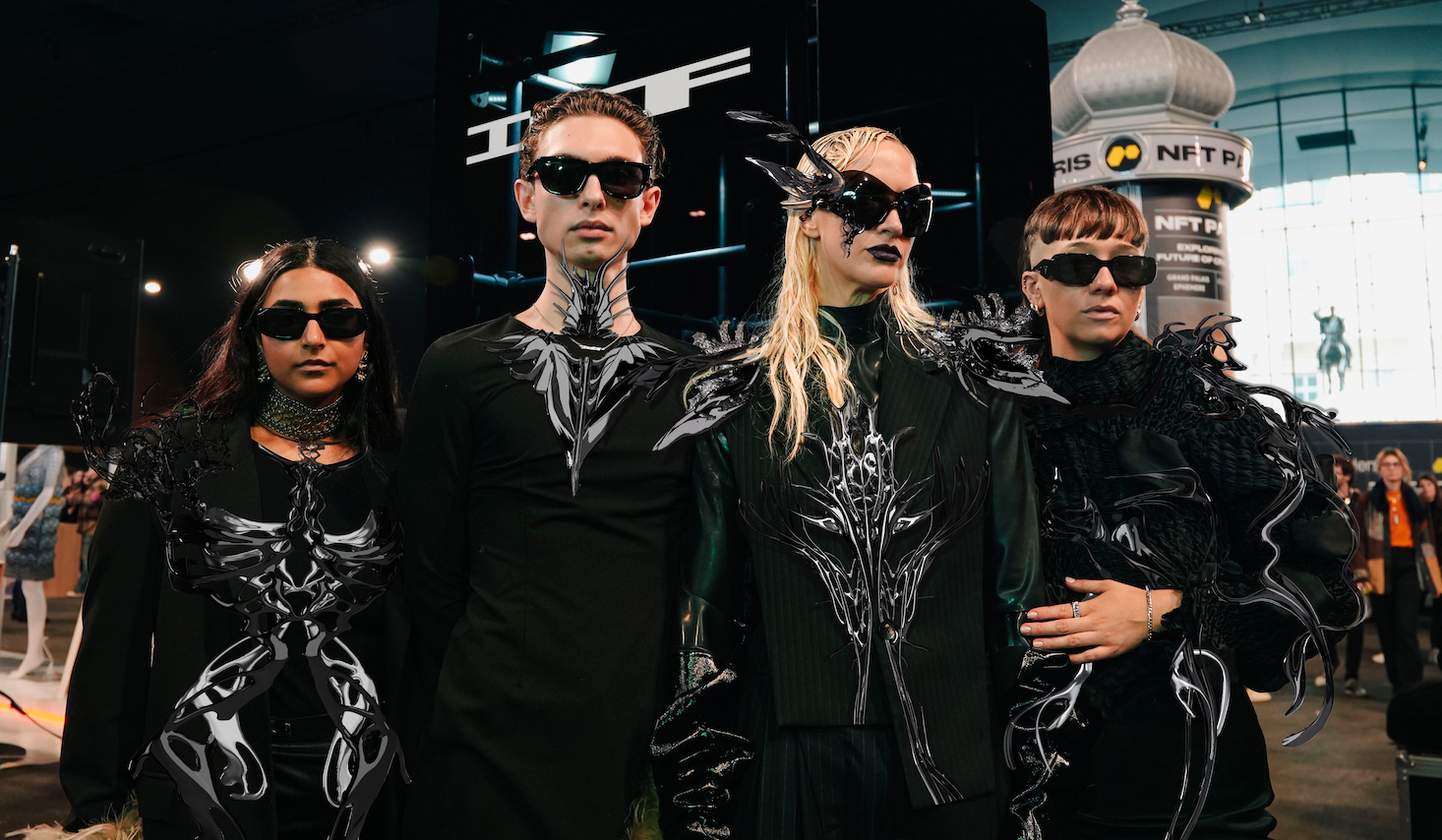
Welcome to Queer By Design, a new monthly column by Jamie Windust. Here, Jamie profiles emerging designers about the intersections of style, identity and expression and how these factors inform their creative practice.
Helmed by Leanne Elliot-Young and Catty Tay, The Institute of Digital Fashion (IoDF) are self-professed “architects of a new digital culture”, with their sights set on creating a world that “utilises digital advances to drive inclusivity and diversity”. Working with brands such as Prada and Nike, the institute creates bespoke creations by manually adapting fabric properties – creating garments which truly defy convention.
In an era when tech bros reign supreme, this queer-led collective have disrupted the digital world and brought this subversive energy to the upper echelons of the fashion world. They have multiple ‘world firsts’ under their belts, including creating the first-ever red carpet NFT (Non-Fungible token) ensemble at the British Fashion Awards, as well as producing the first ever non-binary digital double avatar with Daz3D. At the 2023 Oscars, they brought their IRL X URL activation to the red carpet, dressing Bailey Bass in an eco-conscious digital garment inspired by Zac Posen
If that wasn’t enough, through their free-to-access IRL X URL academy, they are weaving inclusivity into the digital fabric of the future; ensuring that the tools and resources they use in their design process are available to all and flattening hierarchical structures of production in the process.
As Leanne and Catty sat down to speak with GAY TIMES about their work, we unpacked their radically inclusive vision and the interplay of digital and the physical in their work.
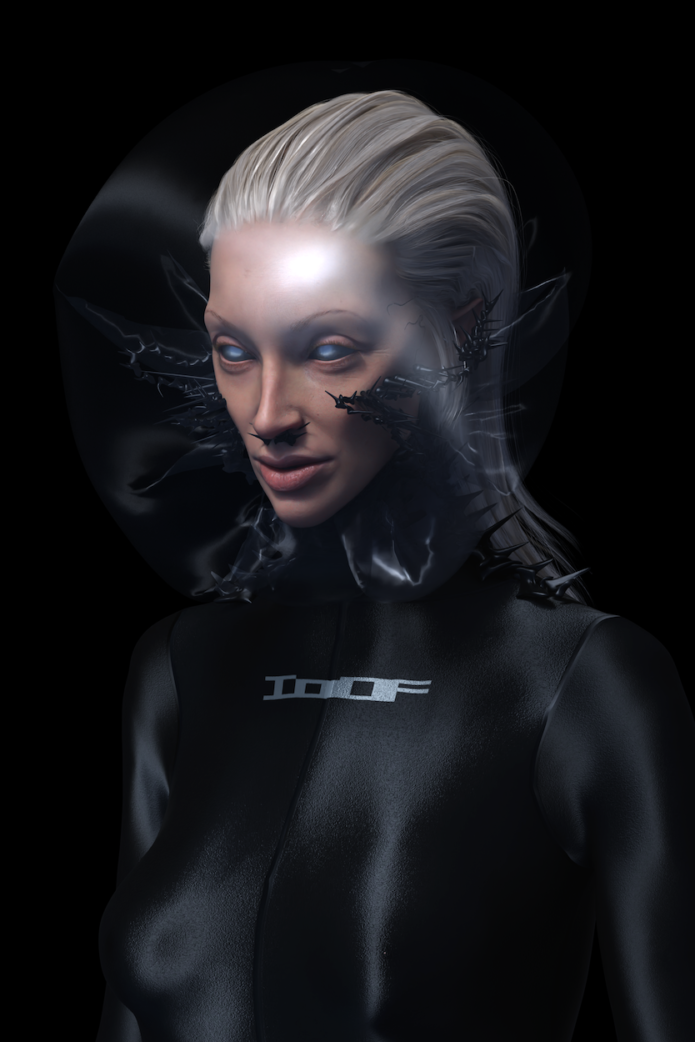
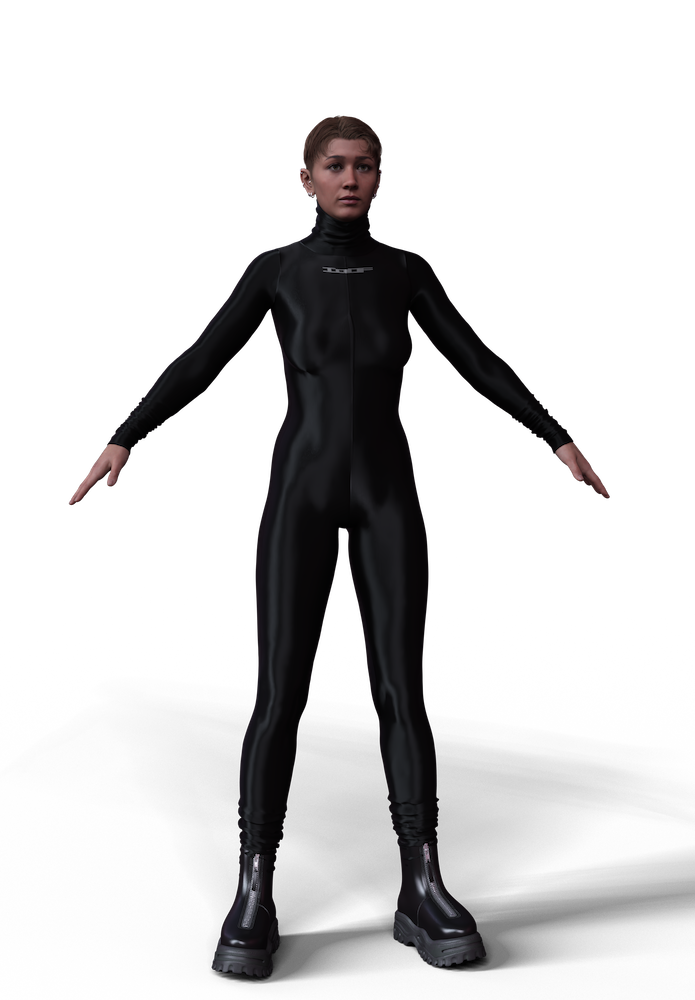
When working with designers, or designing yourself – what is the first step to creating digital fashion?
Conceptualisation stands as the cornerstone of digital fashion creation. It’s about envisioning the idea and ensuring it aligns with our ethos of inclusivity and innovation. The digital fashion products that we create focus on the specifics, manually adapting fabric properties to create a truly responsive garment. It reflects our dedication to detail. We’re committed to democratising fashion design, making it achievable for anyone inspired to explore their creativity. Our platforms and tools are designed to lower entry barriers, ensuring that the realm of digital fashion is open to all.
We also have our IRL X URL academy that’s teaching those to be a part of this new movement. It’s free and open to all and is on a first come first served basis with places for those within the LGBTQI+ community and those who are POC or from disadvantaged backgrounds. These groups always have the first priority because they are our community and the innovators of our times.
Some of your best known work has involved the metaverse, but I know your remit goes beyond that. How would you describe the environment that you work in, and what role does the Institute play in that space?
We do not work solely within metaverse spaces; in fact, we are building a reality where physical and digital are together and support one another; IRL x URL in unison. We’re not just navigating this space; we’re actively shaping it. The IoDF was founded by us to re-frame the system; to drive innovation through our practice to rewrite and restructure a broken system. As co-founders, we built our business around the ethos of wanting to create space for marginalised communities to thrive and be represented.
The metaverse hype is now over, so we can really get back to discuss what’s important: community, human interactions, diversity issues in fashion and sustainability. Basically how can we put the people and the planet first? This approach not only fosters a more inclusive and ethical fashion ecosystem but also positions us as architects of a new digital culture, where creativity and innovation flourish unrestricted.
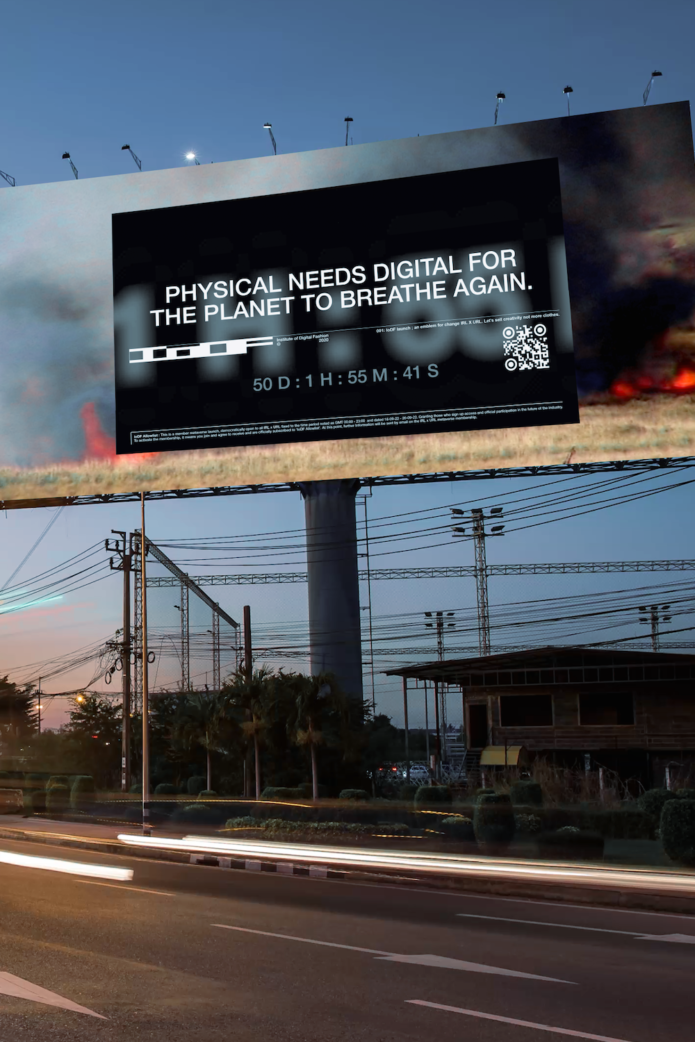
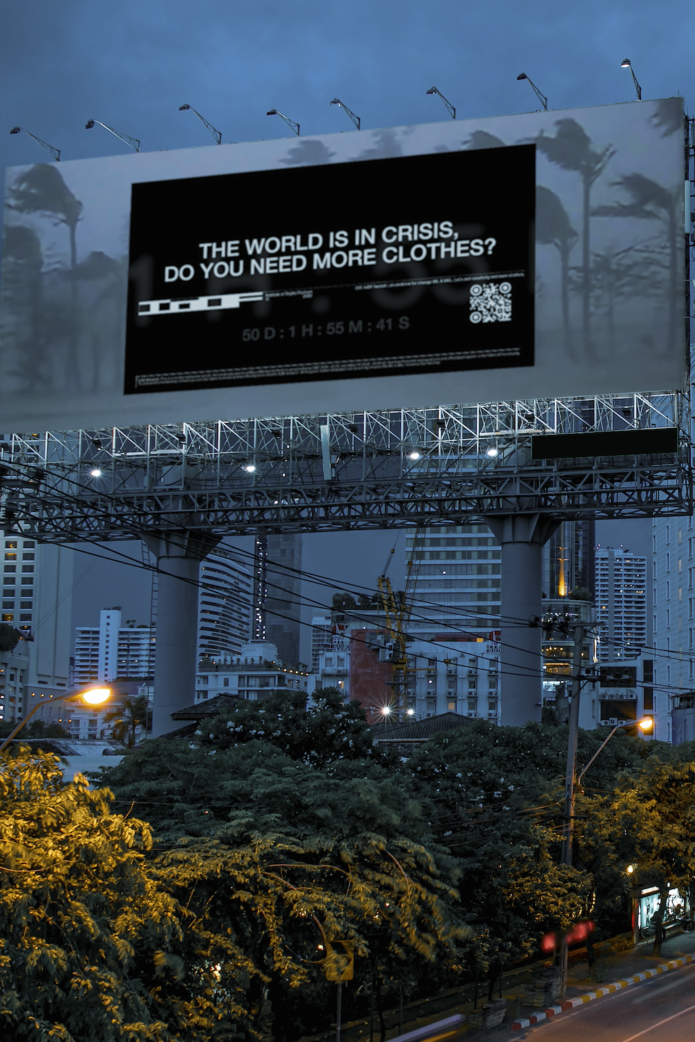
Queer folks are often at the heart of innovation – and this feels no different. How important is it for you both to have LGBTQIA+ people at the centre of what you’re creating?
There has always been cultural osmosis directly from queer narratives historically. The once others and outsiders really drive the heart of fashion and innovation. We are a queer team, our values run through the hiring process. An important part of the work is pushing characterisation to representation, we believe that the voices of the individuals from the cultural background should be the voices within the design process as that has not been happening. For example, working with Daz3D to create a non-binary digital double avatar is a testament to this commitment, where we developed a digital double avatar that allowed for dual sliding genitalia, and gender-non-conforming compatible digital clothing.
Users shouldn’t have to demand to be included; the industry should already be there for them, ready and waiting. Centring LGBTQI+ individuals in our creative process is paramount as their experiences, often marked by a rich tapestry of resilience and innovation, infuse our projects with unparalleled depth and perspective. By amplifying these voices, we’re not just creating digital fashion; we’re nurturing a space where every identity is celebrated and valued.
Where do you see the current ‘traditional’ fashion industry in 10 years time?
In a decade, we envision a fashion industry transformed by its embrace of digital and sustainable practices. No one brand can fix fashion’s sustainability problem, but together as an industry, we can make conscious steps towards a cleaner future. The integration of AR (Augmented Reality), VR (Virtual Reality), and on-demand production will blur the lines between digital and physical fashion, leading to a more inclusive, diverse, and environmentally responsible industry.